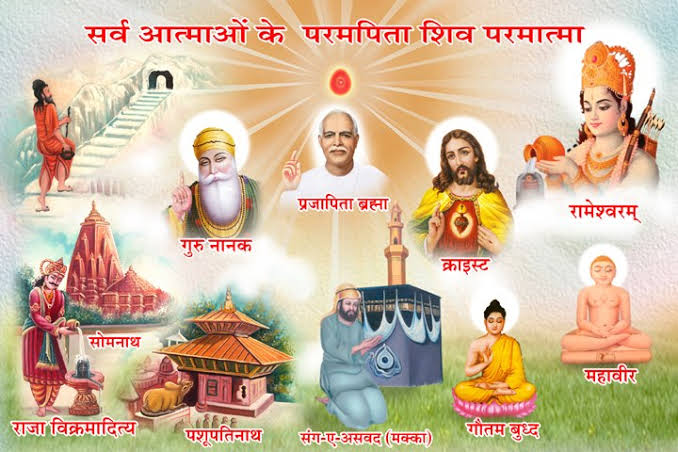Yoga (from Sanskrit योग yoga) means “union,” “yoking,” or “joining connection.” It refers especially to the union of the individual self (body, mind, consciousness) with universal or divine consciousness.
Another classical definition from the Yoga Sūtras of Patañjali is yogaḥ Citta-Vṛtti-Nirodhaḥ, which means “the stilling (or cessation) of the fluctuations of the mind.” Here, yoga is viewed as controlling or calming the mental modifications so that true consciousness (the Self) can be clearly known.
Yoga is a holistic practice that encompasses physical, mental, and spiritual aspects. Here are the
Key Aspects of Yoga:
1. Asanas (Physical Postures)These are physical poses designed to improve strength, flexibility, and balance.
They prepare the body for meditation by reducing physical tension and fatigue.
Examples: Downward Dog, Tree Pose, Warrior Poses.
Techniques for controlling and regulating breath.
Helps in calming the mind, increasing lung capacity, and balancing energy (prana).
Common types: Nadi Shodhana (alternate nostril breathing), Bhramari (bee breath).
The practice of focused concentration and mindfulness.
Aims to achieve mental clarity, inner peace, and self-awareness.
Often combined with breath awareness or mantra repetition.
These form the moral foundation of yoga:
Yamas (Restraints):
Ahimsa – Non-violence
Satya – Truthfulness
Asteya – Non-stealing
Brahmacharya – Moderation
Aparigraha – Non-possessiveness
Niyamas (Observances):
Shaucha – Cleanliness
Santosha – Contentment
Tapas – Discipline
Svadhyaya – Self-study
Ishvara Pranidhana – Surrender to a higher power
Focused attention on a single point or object.
A precursor to meditation.
Techniques include focusing on the breath, a candle flame, or a mantra.
The ultimate goal of yoga: a state of oneness with the universe or divine.
Transcends the ego and individual self.
Final relaxation pose typically at the end of a session.
Integrates the physical and energetic effects of the practice.
Promotes stress release and mental stillness.
Subtle techniques to redirect energy within the body.
Mudras: Hand gestures (e.g., Gyan Mudra for concentration).
Bandhas: Internal locks (e.g., Mula Bandha – root lock).
Repetition of sacred sounds or phrases.
Used to focus the mind, invoke energy, or connect with spiritual meaning.
Example: "Om" or "So Hum."
A yogic lifestyle promotes balance, simplicity, and sattvic (pure) living.
Often includes a vegetarian or plant-based diet, mindful eating, and daily routines that align with natural rhythms.
 |
| Benefits of yoga |
Benefits of Yoga
Yoga offers a wide range of physical, mental, and emotional benefits. Here’s a breakdown of the key benefits:
Physical Benefits
Improved Flexibility
Regular practice helps lengthen muscles and increase joint range of motion.
Increased Strength
Many poses build strength, especially in the core, legs, and arms.
Strengthens postural muscles and promotes spinal alignment.
Enhanced Balance and Coordination
Standing and balancing poses improve stability and body awareness.
Can reduce chronic pain (e.g., back pain, neck tension, joint stiffness).
Improved Breathing
Breathwork (pranayama) increases lung capacity and respiratory health.
Boosted Immunity
Supports immune function through stress reduction and circulation.
Increased Energy and Vitality
Balances energy flow and reduces fatigue.
Better Digestion
Twisting and stretching movements stimulate digestive organs.
Yoga lowers cortisol (stress hormone) and promotes relaxation.
Improved Focus and Concentration
Mindfulness and meditation sharpen mental clarity.
Better Sleep
Reduces insomnia and promotes restful sleep through relaxation.
Emotional Balance
Helps manage anxiety, depression, and mood swings.
Increased Self-Awareness
Encourages introspection and a deeper connection with oneself.
Calmness and Inner Peace
Promotes a sense of tranquility and contentment.
Deeper Connection with Inner Self
Practices like meditation and mantra encourage self-discovery.
Increased Mindfulness
Encourages living in the present moment.
Sense of Unity
Fosters connection with others and the universe (often referred to as "oneness").
Better focus and reduced stress enhance performance at work or school.
Better Relationships
Emotional regulation and mindfulness improve communication and empathy.
Healthier Lifestyle Choices
Encourages mindful eating, reduced substance use, and more physical activity.
"Traditions yoga style" likely refers to the traditional styles of yoga that have been passed down over generations in India. These styles emphasize the roots of yoga as a spiritual, mental, and physical discipline.
Types of yoga :-
🕉️ 1. Hatha YogaFocus: Physical postures (asanas), breath control (pranayama), and meditation.
Origin: Ancient; systematized in texts like the Hatha Yoga Pradipika.
Style: Slow-paced, great for beginners.
Purpose: To prepare the body for deeper spiritual practices.
Focus: A dynamic, physically demanding practice.
Origin: Taught by Pattabhi Jois, based on ancient teachings of Patanjali’s Yoga Sutras (8-limbed path).
Style: Set sequences (Primary, Intermediate, Advanced), synchronizing breath with movement.
Purpose: Physical purification and mental clarity.
Focus: Meditation and mental discipline.
Origin: Described by Patanjali in the Yoga Sutras.
Style: Emphasizes the mind more than physical postures.
Purpose: Mastery over the mind through the 8 limbs of yoga.
Focus: The path of wisdom and self-inquiry.
Style: Philosophical; involves study of sacred texts, contemplation, and meditation.
Purpose: Realization of the true Self (Atman) and unity with the Absolute (Brahman).
Focus: The path of devotion.
Style: Practices include chanting, singing, rituals, and worship.
Purpose: Union with the divine through love and surrender.
Focus: Selfless action and service.
Style: Performing duties without attachment to outcomes.
Purpose: Purifying the ego and attaining liberation through action.
Focus: Awakening dormant spiritual energy (kundalini).
Style: Combines postures, breathwork, chanting, and meditation.
Purpose: Spiritual awakening and transformation.
Focus: Harnessing and transforming energy.
Style: Rituals, mantras, meditation, sometimes misunderstood in the West.
Purpose: Union of the masculine and feminine energies.
Summary Table
| Tradition | Primary Focus | Ideal For |
|---|---|---|
| Hatha Yoga | Body & breath | Beginners, balance seekers |
| Ashtanga Yoga | Strength & discipline | Physically fit, dynamic movers |
| Raja Yoga | Mind & meditation | Spiritual seekers |
| Jnana Yoga | Knowledge & insight | Philosophical thinkers |
| Bhakti Yoga | Devotion & emotion | Emotionally expressive |
| Karma Yoga | Selfless service | Activists, caregivers |
| Kundalini Yoga | Energy awakening | Spiritual transformation |
| Tantra Yoga | Energy & ritual | Advanced practitioners |





